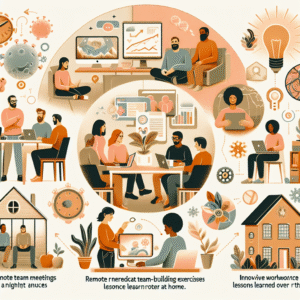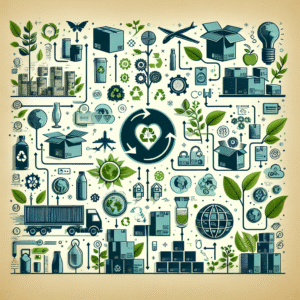Maximizing Remote Team Productivity: Strategies for 2025

Maximizing Remote Team Productivity: Strategies for 2025
Remote work has redefined collaboration, unlocking both tremendous opportunities and unique challenges. As we approach 2025, it’s imperative for organizations to revisit their approaches and harness new strategies that maximize productivity for remote teams. In this article, we explore actionable tactics, updated for the evolving digital landscape, that can help remote teams thrive.
1. Leverage Next-Gen Collaboration Tools
The rapid advancement of technology continues to blur the lines between being physically apart and working seamlessly together. While classic tools like Slack and Zoom remain important, 2025 brings forth AI-powered platforms that automate repetitive tasks, summarize meetings, and track project progress. Platforms such as Notion AI, Microsoft Loop, and integrated workflow bots should be considered to streamline operations and cut down on digital noise.
Tip: Periodically audit your team’s toolkit to eliminate redundant apps and integrate systems for smoother information flow.
2. Flexible and Asynchronous Workflows
With diverse time zones and personal schedules, insisting on rigid 9-to-5 hours can hamper productivity. Embracing asynchronous communication and allowing flexibility lets employees work when they’re most productive. Tools like Loom for video updates, and shared workspaces for project tracking, enable effective async collaboration.
Establish clear guidelines on response times, documentation, and project handoffs to ensure continuity.
3. Focus on Outcomes, Not Hours
In 2025, forward-thinking managers are shifting away from measuring productivity by hours logged. Instead, success is defined by the outcomes produced. This mindset empowers remote employees, builds trust, and eliminates unnecessary micromanagement. Regular goal-setting and transparency in progress allow teams to self-regulate and excel.
Tip: Use OKRs (Objectives and Key Results) or similar frameworks to align individual efforts with big-picture goals.
4. Strengthen Communication and Team Culture
Effective communication transcends basic updates—remote teams need strong human connections. In addition to structured meetings, include informal touchpoints: virtual coffee breaks, team quizzes, or interest-based chat channels. Leaders play a key role in modeling transparency and empathy, ensuring team members feel heard and valued.
Encourage teams to use video when possible, especially for complex or sensitive conversations, to maintain emotion and clarity in communication.
5. Prioritize Well-Being and Work-Life Balance
Burnout is a persistent risk for remote employees, with blurred lines between home and work. In 2025, top-performing organizations support team members by promoting reasonable workloads, regular breaks, and time off. Wellness programs—whether digital fitness challenges or guided mindfulness sessions—build resilience.
Set boundaries around meeting times and encourage employees to disconnect outside working hours.
6. Invest in Continuous Learning
The pace of change means skills can quickly become outdated. Organizations should facilitate ongoing training on both technical tools and soft skills—like digital collaboration, cross-cultural communication, and self-management. Platforms that offer on-demand microlearning, such as Coursera and LinkedIn Learning, can be easily integrated into employees’ daily routines.
7. Optimize the Remote Work Environment
Productivity is not just about processes or software; it’s also about the physical (or digital) workspace. Consider providing stipends for ergonomic equipment or subscriptions to virtual co-working spaces. Encourage employees to design dedicated work areas, minimizing distractions and supporting focus. In 2025, virtual reality (VR) workspaces may evolve, offering immersive collaboration opportunities.
8. Embrace Diversity and Inclusion
As remote teams span continents and cultures, it’s crucial to foster an inclusive environment. Recognize and accommodate different communication styles, religious observances, and local holidays. Empowering diverse talent not only improves morale but also drives innovation and creative problem-solving.
Conclusion: Preparing for the Future
Maximizing remote team productivity in 2025 demands a proactive, people-centric approach. By embracing advanced tools, adopting flexible practices, and fostering a strong team ethos, organizations can stay ahead of the curve. Ultimately, success lies not just in maintaining output—but in cultivating trust, well-being, and growth for every team member.
* The post is written by AI and may contain inaccuracies.


